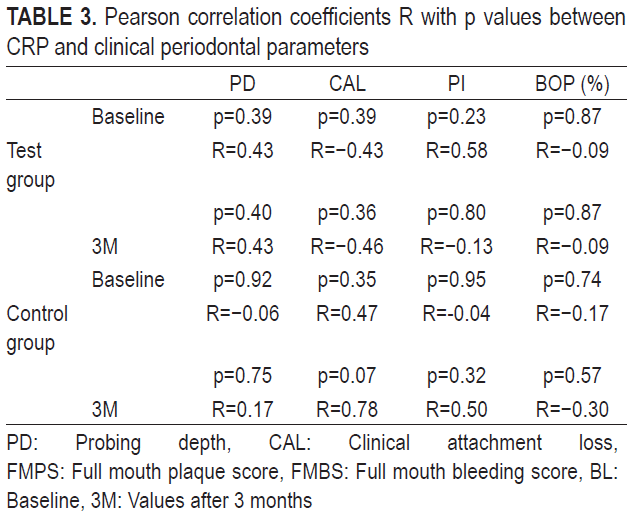C – reactive protein in saliva of non-smoking patients with periodontitis (a pilot study)
DOI:
https://doi.org/10.17532/jhsci.2021.1327Keywords:
C-reactive protein, Periodontitis, Saliva, BiomarkersAbstract
Introduction: C-reactive Protein (CRP) as an inflammatory biomarker can be easily determined in saliva, but the values of salivary CRP in periodontitis are not well-studied. The aim of this study was to analyze and determine the values of salivary CRP in non-smokers with periodontitis stage 3 or 4 before and after supragingival and subgingival full-mouth periodontal therapy.
Methods: Standard periodontal parameters and saliva samples were collected in 12 non-smoking patients. Patients in the test group (n = 6) underwent supragingival and subgingival full-mouth periodontal therapy, and the control group (n = 6) received only supragingival full-mouth therapy. Both groups received the same oral hygiene instructions in addition to therapy. After 3 months, re-registration of periodontal parameters and re-sampling of saliva for analysis of salivary CRP were done for both groups.
Results: Statistical analysis revealed large differences in the values of clinical periodontal parameters and CRP levels in the test group after therapy. Values of salivary CRP in the test and control groups were lower 3 months the therapy; however, the results were not statistically significant. The correlation of clinical periodontal parameters and salivary CRP varied in both groups.
Conclusion: Our pilot study reveals decreased concentrations of salivary C-reactive protein in non-smoking patients following non-surgical periodontal therapy. Further studies are needed to prove the reliability of salivary CRP as a biomarker for periodontitis.
Downloads

Downloads
Published
License
Copyright (c) 2021 Zerina Hadžić, Ivan Puhar

This work is licensed under a Creative Commons Attribution 4.0 International License.










